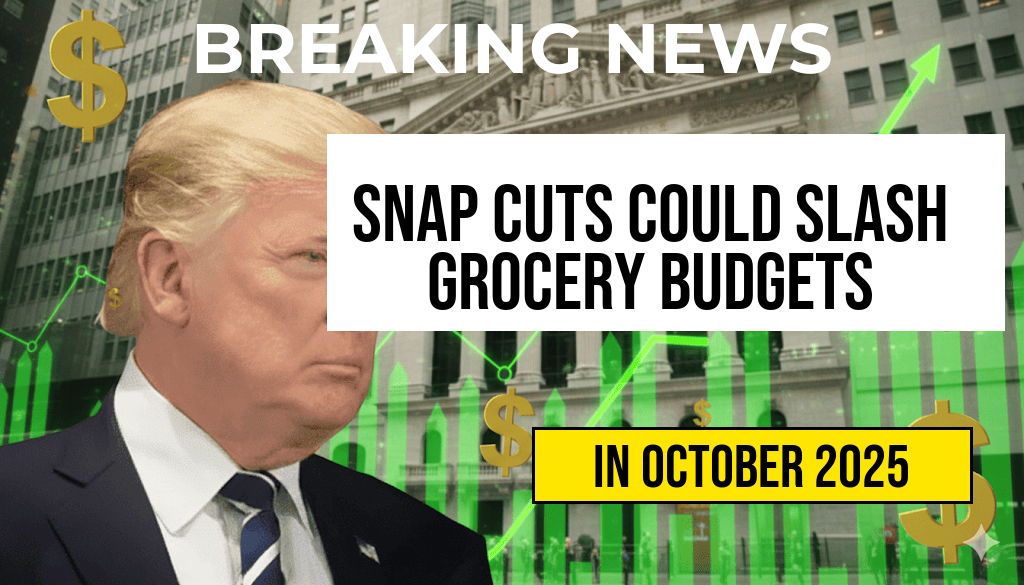As the economic landscape continues to shift, American farmers are grappling with significant financial challenges resulting from cuts to the Supplemental Nutrition Assistance Program (SNAP) and ongoing trade disputes. Reports indicate that thousands of farmers are experiencing a sharp decline in income, jeopardizing their livelihoods and the stability of the agricultural sector as a whole. The dual pressures of reduced government assistance and turbulent trade relations are forcing many to rethink their strategies and seek new avenues for support. This troubling trend not only threatens individual farms but also raises concerns about food security and rural economies across the nation.
Impacts of SNAP Cuts on Agricultural Income
Recent legislative changes have led to reductions in SNAP benefits, a critical source of food assistance for millions of Americans. As a result, farmers who rely heavily on these programs are feeling the financial strain. SNAP cuts have been linked to decreased consumer spending on agricultural products, causing a ripple effect throughout the farming community.
How SNAP Cuts Affect Farmers
- Decreased Sales: Many farmers report a significant drop in sales, particularly in fresh produce and dairy products, which are heavily purchased by SNAP recipients.
- Increased Financial Pressure: With lower income from sales, farmers are struggling to cover operational costs, including labor, equipment, and maintenance.
- Market Instability: The reduction in SNAP benefits contributes to an unstable market, making it difficult for farmers to plan and invest in the future.
Trade Wars and Their Economic Toll
In addition to SNAP cuts, the ongoing trade war has further exacerbated financial pressures on American farmers. Tariffs imposed on key agricultural exports have disrupted traditional markets and diminished income for many producers. The uncertainty surrounding trade negotiations has left farmers in a precarious position.
Consequences of Trade Disputes
- Loss of Export Markets: Farmers are facing significant losses as countries retaliate against U.S. tariffs, leading to reduced demand for American agricultural products.
- Price Drops: The oversupply of certain crops, due to lack of export opportunities, has driven prices down, making it difficult for farmers to break even.
- Long-term Viability: The combination of trade barriers and reduced consumer spending could threaten the long-term viability of many farms, leading to potential closures.
Agricultural Community Responses
In light of these challenges, farmers are exploring various strategies to mitigate the financial impact. Some are diversifying their crops, while others are looking to new markets or alternative products. Additionally, advocacy groups are urging policymakers to reconsider cuts to SNAP and to seek resolution in trade disputes.
Strategies for Survival
- Diversification: Many farmers are expanding their crop selections to include high-demand items or value-added products to attract different consumer bases.
- Local Markets: Increasing participation in farmers’ markets and community-supported agriculture (CSA) programs is becoming a popular avenue for sales.
- Policy Advocacy: Some farmers are joining forces with agricultural organizations to lobby for policy changes that would support both SNAP funding and fair trade practices.
Looking Ahead
The outlook for American farmers remains uncertain as they navigate the complexities of SNAP cuts and trade tensions. While some are finding ways to adapt, many are left struggling to maintain their operations. The interconnectedness of agricultural economics means that the ramifications of these challenges extend beyond the farm, affecting food prices, rural employment, and national food security.
Support and Resources
Farmers seeking assistance can access resources through various organizations such as the U.S. Department of Agriculture (USDA) and local agricultural extension offices. These resources can provide guidance on financial assistance programs and market opportunities.
| Factor | Impact on Farmers | Potential Solutions |
|---|---|---|
| SNAP Cuts | Decreased sales and income | Diversification and local markets |
| Trade Wars | Loss of export opportunities | Policy advocacy and alternative markets |
As farmers confront these challenges, the importance of a robust agricultural policy becomes increasingly clear. The health of the farming sector is vital not only for those who work the land but for the economy and society at large.
Frequently Asked Questions
What are the main reasons for the financial strain faced by farmers?
The financial strain faced by farmers is primarily due to cuts in SNAP benefits and the ongoing trade war, which have resulted in thousands of dollars lost in income.
How do SNAP cuts impact farmers’ income?
SNAP cuts reduce the purchasing power of low-income families, leading to decreased demand for agricultural products, which directly affects farmers’ sales and revenue.
What effect does the trade war have on farmers?
The trade war has led to tariffs and trade barriers that make it harder for farmers to export their products, resulting in loss of market access and income.
Are there any support measures available for farmers facing these challenges?
Farmers may seek assistance through various government programs or nonprofit organizations aimed at providing financial support during tough economic times.
What long-term solutions are being discussed to help farmers?
Long-term solutions include advocating for policy changes that stabilize SNAP benefits, enhance trade agreements, and improve access to financial resources for farmers.











